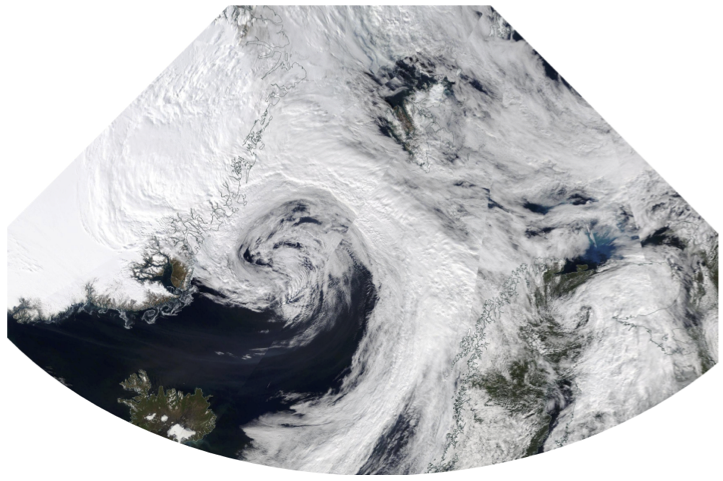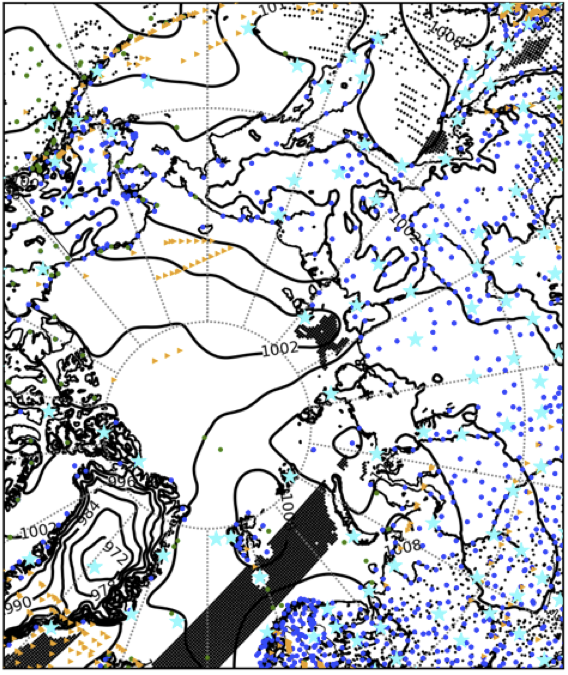[Introduction]

Arctic weather prediction has received increasing interest in recent years due to the shipping opportunities in an increasingly ice-free Arctic Ocean, the increased understanding of the two-way linkages between Arctic and mid-latitude weather systems, and the challenges associated with the currently limited observation capabilities in the Arctic region. Data Assimilation plays an essential role in efforts to make better use of existing Arctic observations and to identify priorities for deploying additional observation networks in the region.

Representative distribution of current observation network in the Arctic from 1200 UTC 16 July 2018. Black dots indicate satellite retrievals, blue dots are surface or buoy data, cyan stars are sondes and orange triangles are aircraft observations (cite).
MAP lab conducts research aimed at better understanding and improving the predictability of Arctic cyclones. Examples of recent and ongoing research on this topic include:
* ======================================================================== *
Highlights of Recent and Ongoing Research
[Examining impacts of existing observations through data denial experiments]

[Identifying meteorological features with greatest need for additional observations to improve Arctic cyclone forecasts]
From Chen, Z., X. Wang, et al. (2022; In Preparation)

[Assimilation of YOPP and THINICE field campaign observations to evaluate impacts of potential future observations]



